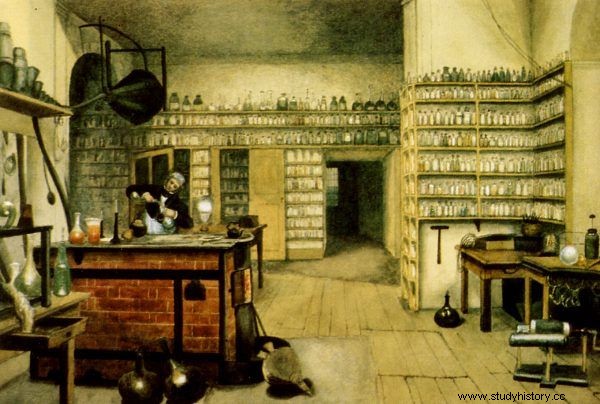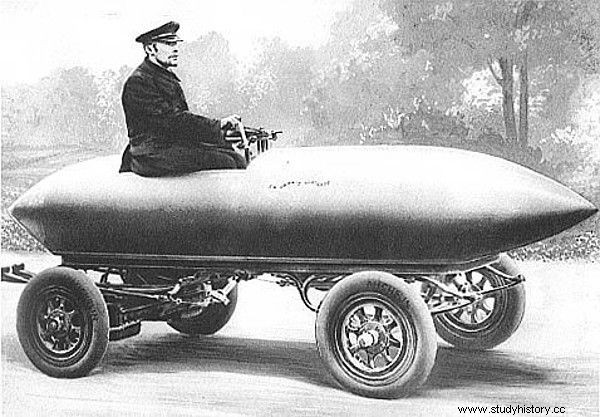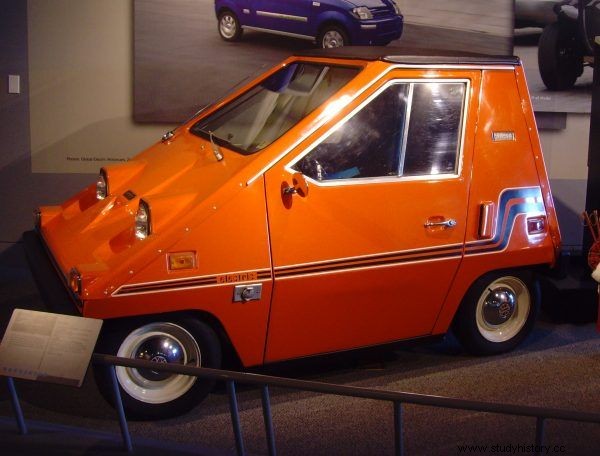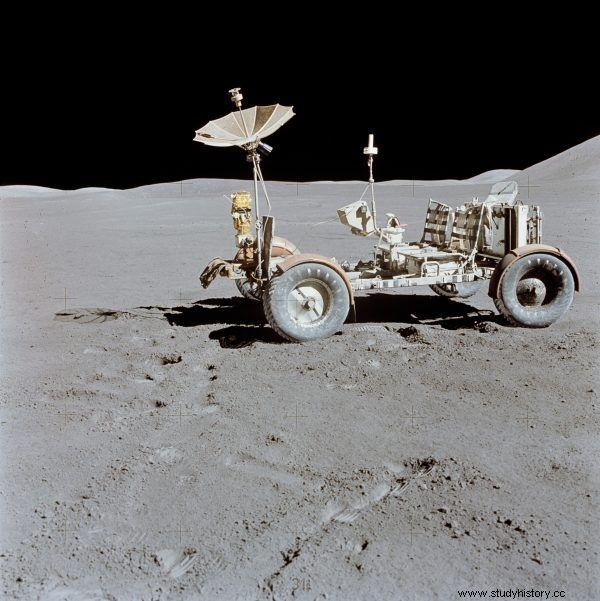The electric car functions as a symbol of modernity, an invention straight from science fiction. Few people know that the concept of running a vehicle with electricity is as old as motoring itself. Did she lose because of the fuel producers' conspiracy?
In 1821, the English physicist Michael Faraday conducted an experiment during which a loose cable began to spin around a magnet due to electricity. This is how the first model of an electric motor was born. Over the years, various scientists experimented with this concept, building more practical engines.
The idea of using electricity to power vehicles emerged  very early. Already in 1834. American Thomas Davenport constructed a miniature model of a battery-powered vehicle. In Great Britain, similar work was carried out by Robert Davidson and George Little.
very early. Already in 1834. American Thomas Davenport constructed a miniature model of a battery-powered vehicle. In Great Britain, similar work was carried out by Robert Davidson and George Little.

Michael Faraday in his lab. Image by Harriet Moore.
The practical implementation of these ideas was impossible due to the lack of an appropriate power source. The batteries of that time not only lacked performance, but also were not rechargeable . The situation changed in 1859 with the invention of the lead-acid battery by the French physicist Gaston Planté.
Crank, steam and electric
In 1881, the Frenchman G. Trouve built a simple three-wheeled electric vehicle, powered by a Siemens engine. The device weighed 160 kg and could accelerate up to 12 km / h. A year later, a similar structure was presented by the British:William Ayrton and John Perry. It allowed to travel up to 40 kilometers, with a maximum speed of 14 km / h.
In the 1890s, there were already companies that built electric automobiles, which, according to the standards in force at that time, resembled light horse-drawn carriages.

La Jamais Contente, the first car to break the 100 km / h barrier. It was powered by an electric motor (pic. Public demen).
The early electric cars made automotive history also for the setting of several speed records. In 1898, the vehicle constructed by Charles Jeantaud exceeded the speed of 63 km / h . A year later, a construction called La Jamais Contente , led by Camille Jenatzy, broke the 100 km / h barrier .
At the turn of the 19th and 20th centuries, the question of the most optimal propulsion for cars was still pending. Producers used steam, internal combustion and electric engines in parallel .
During this period, steam cars no longer resembled their Victorian ancestors, and it is difficult for a modern layman to distinguish them from internal combustion structures at first glance. The boiler was fired with liquid fuel, not coal. The biggest disadvantage of this solution was the considerable weight of the drive unit and the cumbersome operation. The car could not start until the water in the boiler turned into steam at the correct pressure.
The handling of the early combustion vehicles was no less problematic . Starting the engine required a vigorous spin with a massive crank, which not only required physical fitness, but also exposed the user to an injury . There were also complaints about noise and an unpleasant smell of exhaust fumes. Other threats were also feared. Eng. Stanisław Żmigrodzki in 1901 wrote: and even less in their favor the danger of an explosion they hide inside.
A wonderful invention?
Not only was the electric motor free from many of these drawbacks, it also had its own advantages. It worked much quieter without emitting exhaust fumes. During short-term stops, it did not use any energy, unlike the internal combustion engine, which requires a continuous supply of fuel to keep the operation at a minimum speed.
The construction of such a drive was less complicated, and the weight and dimensions were much smaller than in the case of competing solutions. In practice, this translated into simpler structure, lower failure rate and easier service electric automobiles. Since the electric motor can act as a generator, it was possible to build systems that recharge the batteries during braking or descending a hill.

Detroit Electric, 1916 electric car (Photo:Asterion, CC BY-SA 3.0).
The greatest advantage of electric cars was the ease of use. After charging the batteries, they could be started almost immediately, and the characteristics of the drive used in them meant that did not require the installation of a gearbox . For this reason, some producers advertised them as made with women in mind .
Beginning of end
As it turned out, however, this long list of advantages was not enough to ensure electric cars a victory in the race for market domination. The advantages of the electric drive were effectively offset by the disadvantages of power sources available at that time. The battery packs were heavy, sometimes making up 25% of the weight of the entire vehicle . In addition, they held much less energy than a fuel tank of the same mass.
The high efficiency of the electric motor could not compensate for this difference, which translated into a shorter range. As the electrical infrastructure mainly existed in large cities at the beginning of the 20th century, the electric car did not have a chance to prove itself in the provinces.

Cadillac Model Thirty from 1912, the first combustion engine car with an electric starter (Photo:Iwao, CC BY 2.0).
Meanwhile, the greatest disadvantages of the internal combustion engine were gradually eliminated. In 1911 Charles Kettering designed an electric starter, which a year later began to be used in series production Cadillac cars.
Heavy and dangerous cranks were a thing of the past, and an internal combustion car could be started as easily and conveniently as an electric car. With the increase in the number of motor vehicles on the road, engine noise and the smell of exhaust fumes have become common everyday reality and accepted by the public.
By the 1920s, electric cars lost the competition with internal combustion cars. The electric drive itself became popular in transport where it was possible to use traction power, omitting troublesome batteries:on railways and in public transport (trams and trolleybuses).

Electric cars have been revisited from time to time, especially in times of fuel crises. Produced in the 1970s, CitiCar was the most popular American electric car until the Tesla Rodster era (photo:Klaus Nahr, CC BY-SA 2.0).
The idea of an electric car was repeated from time to time after the Second World War, but without much success. It was especially remembered during fuel crises, when political unrest threatened the continuity of oil supplies and destabilized its price on world markets.
Like a phoenix from the ashes
The concept of an electric car was revived in the 1990s. This was a consequence of the growing public awareness of the dangers of environmental pollution, as well as political actions aimed at reducing carbon dioxide emissions to the atmosphere.
In 1996, General Motors launched the EV1 electric car. More than a thousand of such vehicles entered the American roads. They fell into the hands of previously selected customers, who, however, could not acquire them - the policy adopted by the company allowed only leasing.
Production of the EV1 was discontinued in 1999. During the next three years, all cars were taken over by the manufacturer. Most of the copies were scrapped, and several dozen were donated to museums of technology and universities. As EV1 had a good reputation among users, the manufacturer's decision sparked a wave of conspiracy theories , talking about pressure from the oil lobby that made the project end.

Electric cars perform well in even the most extreme conditions (photo:Dave Scott, NASA, public domain).
In 2006, this version of the events was supported by the authors of the documentary Who killed electric car? Based on a series of interviews with former EV1 users, they tried to prove that, contrary to the manufacturer's assurances, there was public interest in this technology sufficient to ensure its market success. The currently observed fascination with electric cars may prove that they were indeed right.
Electric vehicles are experiencing a renaissance of interest, which is largely due to the activities of companies such as Tesla Motors owned by Elon Musk. Contemporary constructions use new technological achievements.
Heavy lead-acid batteries are replaced by lightweight and high-capacity lithium-ion batteries. The same ones that supply, for example, ubiquitous smartphones and tablets and more and more popular "drones". Time will tell if this time electric vehicles will manage to regain the favors they lost almost a hundred years ago.
Inspiration:
This article was inspired by Ashlee Vance's book Elon Musk. Biography of the creator of PayPal, Tesla, SpaceX (Horizon 2016 sign).
Bibliography:
- Andrzej Kajetan Wróblewski, History of Physics. From the earliest times to the present day , PWN, Warsaw 2009.
- Maja Duda, Andrzej Krawczyk, Great researchers of electromagnetism , Institute of Science and Research ZTUREK, Warsaw 2003.
- Andrzej Zieliński, Passenger cars. History of development , Wydawnictwa Komunikacji i Łączności, Warsaw 2009.
- Michael H. Westbrook, The electric car. Development and future of battery, hybrid and fuel-cell cars , Institution of Electrical Engineers, London 2005.
- Stanisław Żmigrodzki, About electric cars , "Technical Journal", Lviv, July 25, 1901.
